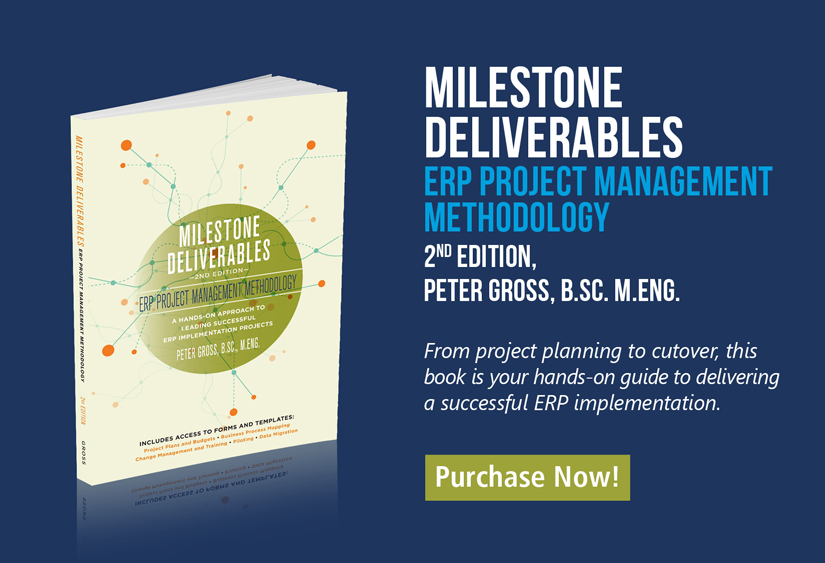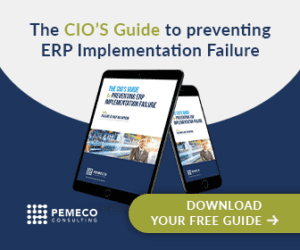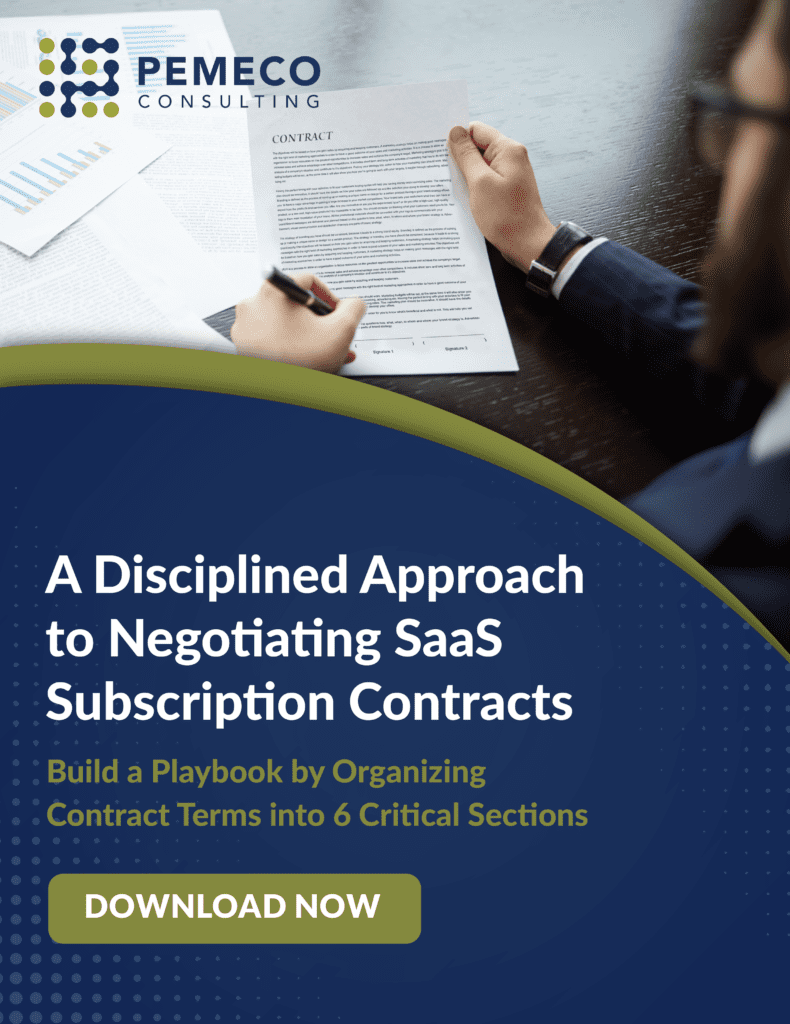Recently, I delivered a presentation on managing ERP implementation projects at the PMI Summit 2021 event “Change is Scary” Halloween-themed event. In my lecture, “Hershey Halloween Debacle“, I analyzed the causes of Hershey’s massive 1999 ERP implementation failure relating to its $115 (US) million deployment of SAP, Manugistics, and Seibel Systems that caused a 19% quarterly profit drop and 8% stock plunge. You can watch a teaser below and read more about it below.
In my presentation, I facetiously noted that a “fresh approach” to implementation management is needed because most companies continue to take the same flawed approach to ERP implementation project management. It’s this flawed approach that leads to an industry-wide ERP implementation failure rate of 68% (source: Standish Group 2009 CHAOS report) and a catastrophic failure rate of 17% (source: Harvard Business Review, 2011). Moreover, if you’re wondering what makes 1-in-6 projects a catastrophic failure, try an average cost overrun of $170 million and an average schedule overrun of 70%.
In my presentation and in my well-cited case study on the Hershey’s project (you can read the Hershey’s ERP failure case study here), I study the causes of the failure and recommend solutions that, had they been implemented, could have driven a successful outcome. Those solutions are based on our firm’s Milestone Deliverables ERP implementation project management methodology. This methodology has been the go-to standard since 1978 and one that we’ve used to successfully deliver each and every one of our 700 implementation projects. Milestone Deliverables is based on the premise that people (and teams) are most effective when they work towards small, achievable, actionable and measurable goals. Our methodology does just that. It breaks down a complex ERP implementation project into 13 distinct phases using 14 actionable deliverables.
Each deliverable is associated with tangible measures of success; including those related to cost, schedule and performance. These metrics act as signposts – or milestones – along the route to go-live. Project teams are required to stop and reflect at each of this milestone. This way, they can see whether they’re on the path to success. So in the event that they’ve deviated, they’re in a position to take immediate, corrective action to get themselves back on track.
In this post, I focus on three phases of an ERP project: ERP implementation project planning, business process mapping, and ERP systems testing and piloting. For an ERP implementation project to be successful, each implementation phase has to be properly planned and effectively managed. Poor implementation planning and management is likely to send the project to its grave.
Project Planning
In many ways, an ERP implementation project plan should act as a GPS navigator for the implementation project. The ERP project plan should lay out a clearly marked roadmap – turn-by-turn – to a successful outcome. ERP implementation success will ultimately be judged relative to cost, schedule, and performance. It, therefore, becomes critical that each of the implementation project’s component phases contain corresponding milestones and key deliverables that tangibly indicate whether the milestones have been successfully achieved, each relative to their contribution toward those measurable success factors.
Our clients – and other companies that implement using Milestone Deliverables – break down their ERP project plans into the five following components (learn more about ERP implementation plans by reading ERP Implementation Tip #8: 5 Steps to Building a Formalized ERP Project Plan).
Project Charter | Defining performance success partly depends on the business value that the organization is trying to achieve. The project charter crystallizes the business rationales that drive the project. |
Scope Statement | The scope statement defines the project’s boundaries and is derived from the charter. It should contain two components:
|
Target Budget and Schedule | Each of the project phases – and milestone deliverables – should be allocated a specific completion date and cost. |
Organizational Structure and Staff Requirements | A formal reporting structure defines key communications lines, authorities and responsibilities. This helps prevent the “black hole of accountability” syndrome that can lead to unmanaged show-stopping issues, finger-pointing, and lawsuits. |
Subsidiary Plans | These are, in effect, mini project plans for various sub-components. Each subproject should be broken down into specific tasks, MSFs, budgets, and schedules. Examples of subsidiary plans include IT infrastructure plan, risk management plan, resource management plan, scope management plan, and communications plan. |

Business Process Mapping
In my article Without Restructuring, ERP Implementation is an Expensive Waste, I make the argument that ERP software can’t make your organization significantly better unless there’s a corresponding commitment to operational improvement.
Given the inextricable link between operations and ERP, it’s critical that the future state of an organization’s operations be designed alongside the software. This exercise of defining how the business and systems will process transactions is called business process mapping. These mappings show the work tasks – performed by people, systems, and machines – that are required to push a transaction through the organization.
The following four deliverables collectively comprise the Milestone Deliverables process mapping phase:
Business Scenarios List | This is the central organizing tool. It should be used to catalog each and every business process, intended handling method, related reference documents, and status. To learn more about the Business Scenario list, read this article: The Business Scenario List – 7-Steps to Building an ERP Business Scenarios List. |
Blueprint Whitepapers | These documents contain the draft blueprints for the future business processes. Each blueprint whitepaper should accomplish two goals:
To learn more about blueprint whitepapers, read this article: 7-Part Structure to ERP Blueprint Whitepapers. |
Gaps and Issues Database: Risk Management | This is the go-to database to track, prioritize and manage all ongoing project issues in a productive manner. Each issue is defined, assigned, prioritized, scheduled and tracked. To learn more about the gaps and issues database read this article: 5-Steps To ERP Risk Management. |
Change Management Plan | At the core, business process mapping is about change. For these changes to be successful, people need to adapt to the new ways of doing business. The change management plan provides a methodological process to implement the changes and includes gap analysis, job assignment, H.R. alignment, communications, training, and budget. To learn more about the change management plan, read this article: ERP Change Management Plan – Six-Stage Surgical Approach. |
Systems Testing
Back to the Hershey’s case study. In 1999, Hershey’s had decided to fast-track its implementation to get the systems up-and-running to get ahead of the potential Y2K disaster. So, instead of modifying its complex implementation scope, Hershey’s decided cut corners on key ERP implementation phases relating to systems testing. Because Hershey’s cut over with insufficiently tested complex interfaces, Hershey’s found itself unable to ship $100 million worth of inventory.
When it comes to testing, we recommend that organizations shouldn’t skimp. They’re better off learning that things are broken in a test environment rather than in a productive environment. The risk is simply not worth taking. Using Milestone Deliverables, we break down system testing into three distinct phases, as follows.
Conference Room Pilot (CRP) | In the CRP testing phase, the goal is to make sure that the ERP software can handle the most probable business scenarios (i.e. the 80% scenarios) for each and every functional department (click here for a discussion of 80% and 20% scenarios). The core team members participate in the CRP, and this represents an important element of their training. Learn about the six key tasks that must be completed in a CRP by reading this article: ERP System Testing #1 | The Conference Room Pilot. |
Departmental Pilot (DP) – CRP 2 | In the DP phase, all of the organization’s business processes should be tested – both the 80% and 20% scenarios. This testing phase should accomplish four main purposes:
To learn more about the DP testing phase, read this article: ERP System Testing #2: Departmental Pilot Stress-Testing. |
Integrated Pilot (IP) and User Acceptance Testing (UAT) | In the IP/UAT testing phase, the testing is focused on the validity of the tie-ins – i.e., whether the system is capable of handing-off a transaction from one functional area to another. The key to effective integrated testing is to create a realistic day-in-the-life test environment using a wide set of actual legacy transactions. To learn more about this testing phase, read our article: ERP System Testing #3 | Integrated Pilot Simulation. |
In Part 2 of the Introduction to Managing ERP Implementations Using Milestone Deliverables, I’ll cover the following three components that are also critical to ERP project success: a project’s organizational structure, training and data migration.
Need to learn more about Milestone Deliverables?
We wrote the book. Read Milestone Deliverables: ERP Project Management Methodology.






